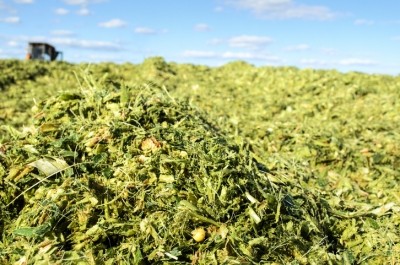Feed additives and pesticide residues risk analysis models under spotlight

The request has been made in the context of the recent REFIT evaluation of pesticides legislation, which identified a need for better enforcement, including the harmonization and alignment of exposure assessment methodologies used in different sectoral legislation.
In a letter outlining the issue, sent to the European Food Safety Authority (EFSA) and the European Medicines Agency (EMA), the Commission noted that a number of active substances can be used for different purposes such as VMPs, pesticides and feed additives.
“Those substances are regulated under different sectoral legislation and are assessed separately by EFSA and/or EMA in the context of the respective legislations.
“Currently, different risk assessment methodologies are used. While it is acknowledged that there are other factors that may lead to different risk assessment outcomes (e.g. different data requirements in view of the different purposes of the underlying studies), some of the different risk assessment outcomes could be avoided by alignment of risk assessment methodologies, especially with regard to exposure assessment models or at least parts thereof.”
Inconsistent conclusions flagged
For veterinary medicinal products, the Commission noted that the EMA uses the Theoretical Maximum Daily Intake (TMDI) model to estimate the risk from lifelong consumer exposure to residues from animals treated with VMPs.
This model was formerly also used by EFSA’s FEEDAP Panel and by the Joint FAO/WHO Expert Committee on Food Additives (JECFA), but both EFSA and JCFA have now moved away from the TMDI model, in favor of alternative models in accordance with scientific and digital developments in this field, said the Commission.
“Whereas JECFA developed the Global Estimated Chronic Dietary Exposure (GECDE) model for veterinary medicinal products, EFSA developed a more refined model for the assessment of consumer exposure of feed additives: the FACE (Feed Additives Consumer Exposure) calculator with age-dependent exposure scenarios, including all known uses.
“The use of different models increases the risk that EMA, EFSA (and JECFA) reach conclusions that are inconsistent with each other, causing issues for risk managers and the public, and difficulties in setting harmonized standards for international trade in animal-derived food commodities.”
Similarly, in the area of pesticides residues, for substances with dual uses as VMPs and pesticides, maximum residue levels (MRLs) may be different for the same substance in the same animal commodity - muscle, fat, liver, kidney, eggs or milk - or may have different residue definitions depending on the legislative framework under which the MRLs were established, according to the Commission's communication to the two bodies.
“This has led to uncertainties for EU enforcement authorities as to the appropriate enforcement level and residue definition as a basis to take enforcement action,” said the EU executive.
Now EFSA and the EMA are being asked to assess currently available exposure assessment models used routinely in the EU and internationally for VMPs, feed additives and pesticides residues for their suitability of use in routine risk assessment in these areas.
Also sought is a description of the advantages and limitations of those models, overall, and per area. Furthermore, the two organizations have been requested to discuss whether alignment of existing models would be possible and under which circumstances.















